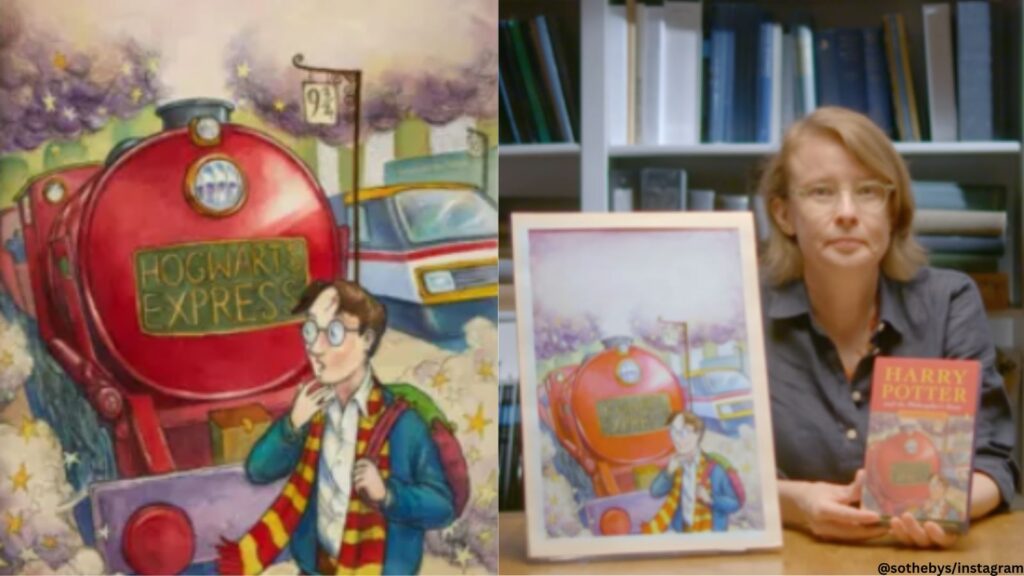An original watercolour from the first edition of J.K. Rowling's “Harry Potter and the Philosopher's Stone” has sold for a record $1.9 million (Rs 1,627,041.97) at an auction in the United States, more than three times its estimate.
In a video by @sothebys, Kalika Sands explains the process behind the artwork on the cover of the book. The book was first auctioned for £85,750 (Rs 90,56,580) in 2001, before the Harry Potter series was completed.
The piece is expected to sell for $400,000 to $600,000, according to Sotheby's, the highest pre-sale estimate for any Harry Potter item. Four bidders lasted nearly 10 minutes during Wednesday's auction. The identities of the winning bidders were not disclosed.
But Sands points to the piece and says, “This watercolor is where it all began,” explaining that in 1997, Thomas Taylor, then just 23, created the iconic illustration of Harry Potter standing in front of the Hogwarts Express, which symbolized the start of the young wizard's journey into the wizarding world.
“This is where the concept of the Harry Potter world began, from the books to the films to the merchandise,” she says.
Sands further states that Taylor, fresh out of art school, visited Bloomsbury in London and submitted some paintings and sketches. Publisher Barry Cunningham paired Thomas and Rowling, an unknown artist and an unknown writer, and what they produced is legendary.

A watercolor in the first edition of Harry Potter and the Philosopher's Stone shows Harry gazing at the Hogwarts Express for the first time.
Sands said one notable thing about the artwork is that “you can actually see more than you can see on the cover of the published novel, so in addition to Platform 9 and 3/4 you can also see Platform 10. You also see more of Harry's Muggle clothes, which are wrinkled and slightly oversized.”
What's striking is that the watercolors add even more detail to the smoke billowing from the Hogwarts Express. Sands explains that Thomas Taylor's graphic design approach considered where the book title should be placed on the cover, and strategically placed the artwork.
Sands also points out the scarf Harry is wearing in the artwork, which is in the iconic red and yellow colors that represent his house, Gryffindor. But that's not all the artwork represents. This particular outfit also gives the impression of foreshadowing what's to come in the next chapter.
Sands points out that the difference in auction prices between now and 2001, when only four of the seven books in the series were published, reflects the immense popularity of Rowling's work.
© IE Online Media Services, Inc.
First uploaded on: 27 June 2024 20:48 IST



